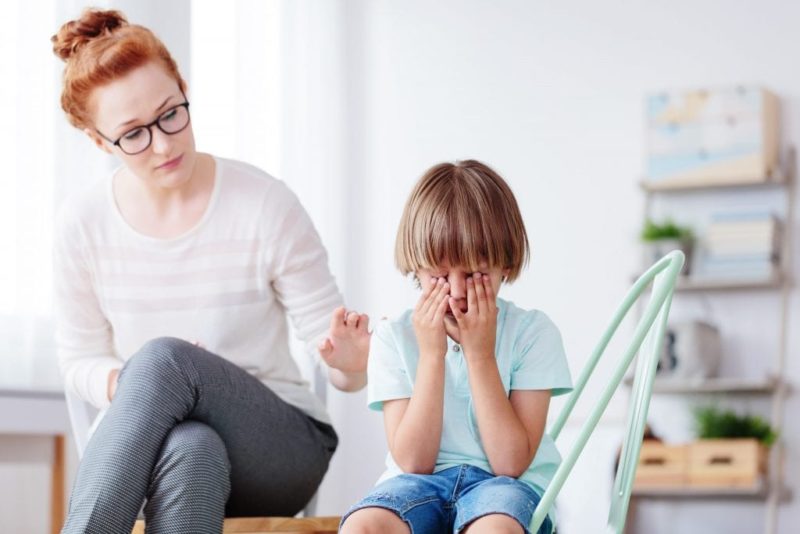If your child struggles with emotional regulation, the Zones of Regulation® can be a great tool to help them. Our team recently had the opportunity to learn from Leah M. Kuypers — who developed the Zones of Regulation®. Here, we’ve shared our learnings that you can use to help your child.
“Life is 10% what happens to us, and 90% how we react to it.”
- Charles Swindoll
As part of growing up, children encounter new events and experiences, like starting school, moving homes, and forming friendships. Sometimes, these experiences can be overwhelming, and young children might show their distress by crying, withdrawing, or seeking comfort. It’s important to note that in all these instances, behaviour is a child’s form of communication.
When parents and caregivers respond with a soothing tone of voice, comforting touch, and understanding, children learn they can feel safe and reassured. They discover that others are there to help them recognise and navigate their emotions, offering comfort when needed. Parents and caregivers act as ’emotional coaches,’ supporting children in learning to manage their feelings and behaviours, an essential part of the self-regulation process known as co-regulation.
Emotional and behavioural self-regulation fosters children’s independence and resilience as they grow. This ability to manage their own emotions and actions allows children to develop stronger relationships with peers and adults alike. Recognising when we’re becoming less regulated helps us manage our emotions and guide ourselves toward a healthier state. While some children naturally develop these skills, others benefit from learning and practicing them, which is the aim of The Zones of Regulation®.
What Are ‘The Zones’?
The Zones of Regulation® is a systematic, cognitive behavioural approach used to teach self-regulation by grouping our state of alertness, feelings and arousal into four coloured zones. Created by Occupational Therapist and Autism Resource Specialist, Leah Kuypers, The Zones of Regulation® framework provides children with strategies and tools to become aware and independent in controlling their emotional impulses, manage their sensory needs, and improve their overall ability to problem solve. Through incorporating the concepts of Social Thinking, the lessons on self-regulation become meaningful to our kids’ lives as they gain a deeper understanding of the impact their behaviour has on relationships.
So, I’m sure by now you’re wondering what these four zones are!
Firstly, we have the Red Zone. This is used to describe extremely heightened states of alertness and strong emotions. Your child may be elated, experiencing anger or extremely frightened when in the Red Zone.
The Yellow Zone is also used to describe a heightened state of alertness and elevated emotions; however, we have more control when we are in the Yellow Zone. A person may be experiencing frustration, anxiety, excitement, silliness, or nervousness when in the Yellow Zone.
The Green Zone is used to describe a calm state of alertness. A person may be described as happy, focused, calm, or ready to learn when in the Green Zone. This is the zone where optimal learning occurs.
And lastly, we have the Blue Zone. This is used to describe low states of alertness such as when one feels sad, tired, sick, or bored.
A fun and interactive way of introducing The Zones, is by comparing them to traffic signs. When given a green light or in the Green Zone, a child is “good to go”. A yellow sign means be aware or take caution, which applies to the Yellow Zone. A red light or stop sign means stop, and when a child is the Red Zone, this often is the case. The Blue Zone can be compared to the rest area signs where we go to rest or reenergise. Another engaging way to introduce the concept is by creating a feelings volcano. In this activity, the volcano is divided into four zones, starting with blue at the bottom and red at the top, resembling a volcanic eruption. This analogy helps show how our feelings can start subtly and intensify as we move through each layer.
Practical Ways to Help Your Child
There are many strategies we use as Occupational Therapists to teach children about The Zones. This is done by exploring various types of tools, such as integrating the mind and body through the use of calming techniques, providing our muscles and joints with input to help organise our sensory system and thinking strategies. For this reason, The Zones of Regulation® allow for individualisation where kids are able to interpret and learn through techniques that are meaningful and helpful to them.
Some examples of these are:
- Children’s literature – matching characters to their corresponding Zone
- Communication boards for pre-schoolers
- Visuals for students to ‘check in’ & indicate how they’re feeling
- The Zones of Regulation® Bingo – exposure through varying facial expressions
- Animated Videos or YouTube Videos e.g. Disney movies and Sesame Street clips
- Body Scan Chart
- In addition to the above suggestions, on our website occupationaltherapy.com.au, we have our OT Hub for Children where you’ll find a video bank with a variety of activities you can complete at home to assist your child in regulating their emotions!
All of The Zones are natural to experience, though by utilising this framework, it teaches kids how to recognise and manage their Zone based on the environment and its demands, including the people around them.
At Occupational Therapy Helping Children, we use The Zones of Regulation® with many children who find self-regulation difficult. If you’d like to learn more about The Zones of Regulation® and how to help your child with self-regulation, please talk to your child’s OT or contact our head office. You can also bring your child to our regular Social Skills and Self-Regulation holiday groups for our primary-aged clients.


